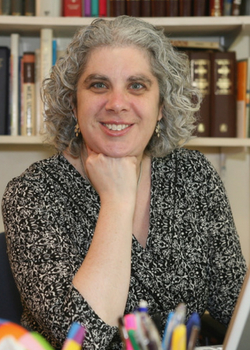Tu Bishvat (the 15th of the month of Shevat) is first mentioned in early rabbinic tradition, as a “new year” for trees – or more accurately, fruit and nut-bearing trees. In fact, according to the Mishnah, in Rosh haShanah 1:1, trees may have two separate new years. One of these is on the first of Tishrei to mark the age of the tree (that is, no matter what date a tree was planted or replanted, it becomes a year older on the first of Tishrei; this is important because according to Lev. 19:23-25 one may not eat of the fruit of a newly planted tree for four years). The other marks when a new year begins for tithing the produce of the tree – that is, it is a kind of rabbinic “tax” year. Fruit that was grown before this date was included in the prior year’s yield for the purpose of tithing, while all fruit that emerged after became part of the tithe of the coming year.
There is a dispute about the date of this new year – the House of Shammai date it to the first of Shevat, while the House of Hillel designates the fifteenth. Neither of the Talmuds, when they comment (very briefly!) on this mishnah, take up directly the question of which House is correct, but since in debates between these two schools, Jewish law/practice almost always follows the House of Hillel, it came to be accepted that the date would be the fifteenth. What both Talmuds (Yerushalmi RH 1:2, 57a; Babylonian Talmud Rosh haShanah 14a) do attempt to answer is why the date should be in this month at all, on either the first or the fifteenth. This time of year is still during the rainy season the Land of Israel (which typically occurs from shortly after Sukkot until about Passover), and while it still feels very much like winter. Why now?
One answer given in both Talmuds, in the name of Rabbi Elazar who in turn cites Rabbi Oshayah (or Hoshayah), is that “most of the rains of the year have passed, and most of the (winter) season is still to come [literally, “is still outside”].” This, though, prompts several (interconnected) questions. First is one asked in the Babylonian Talmud: why should it be significant that most of the winter is yet to come? In fact, wouldn’t that be a reason to wait until it is closer to spring – and the growing season? Rather, the passage answers, we mark the new year for trees, and the growth of their produce, from this time despite the fact that much of winter is still to come. Later commentators ask another question: what does it mean that “most of the rains of the year have passed” by this time – what makes this the tipping point in the rainy season? One possibility (offered by the medieval commentator Rabbenu Hananel) is that by either the beginning or the middle of Shevat a bit more of the actually rainy season has passed (depending on when exactly one thinks the season begins and ends). An alternate explanation (see Rashi, for example) is that the heavier rains are usually earlier in the season and that by this time most of the rain of the season has already fallen. Either way, though, the passing of the midpoint of the rainy season is the critical factor.
So finally, why should the rain be the critical factor? Here, the Yerushalmi adds one small comment from Rabbi Zeira: “Up until now, they [the trees] live from the water of the previous year, and from now on they live from the water of the year to come.” This statement (or one like it) does not appear in the Babylonian Talmud, but similar ideas are taken up by the medieval commentators. They suggest that this is the time of the year when the processes by which produce grows on the trees is just beginning, when trees make the transition from the growth that marked the old year to that of the new. As Rashi notes, “and the sap rises in the trees and the fruits are found to start forming from this time.”
That is, this last question points us towards one important way of understanding and learning from the significance of Tu Bishvat and the new year of the trees. In light of what both Rabbi Zeira and Rashi (and others) have to say about the choice of this date, this time of year, we can see that Tu Bishvat marks the deep value of potential and the sources that create and nourish potential, and not just the final product (or produce). While it is the eventual, actual produce of the tree from which a tithe will be taken and dedicated, that produce cannot come to (literal and figurative) fruition without that which first sets the conditions for growth – the water that nourishes the tree, the sap that carries nutrients from the water and soil to the leaves and buds and fruits or nuts that eventually develop.
And so too with us. Are we to be measured primarily by what we produce (be it for our families, our communities, our professions, the world), to judge ourselves and our contributions only by that which we are able to bring to completion? On Tu Bishvat, let us rather take stock of and give thanks for all that was necessary to bring us to this moment and into the future. Let us look for what new potential is arising in us and let us nurture the potential rising in others around us. And then let us go forward in the hopes of a fruitful new year in which all that potential and more is fulfilled.


 Download PDF
Download PDF